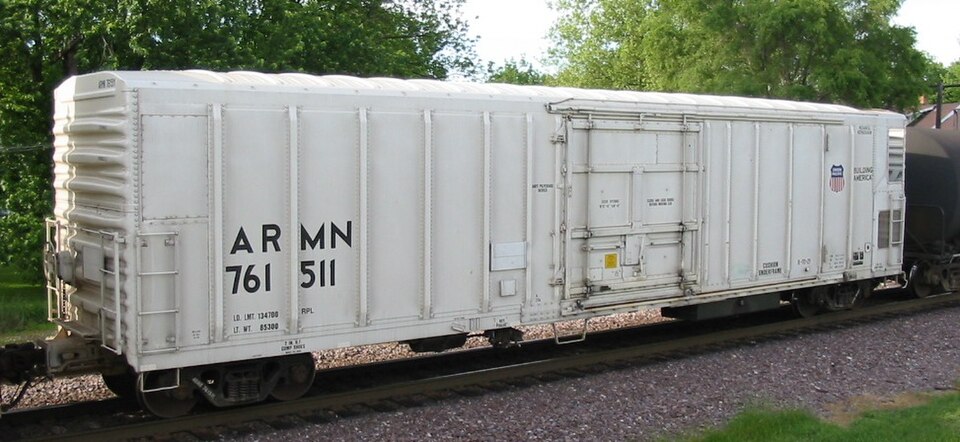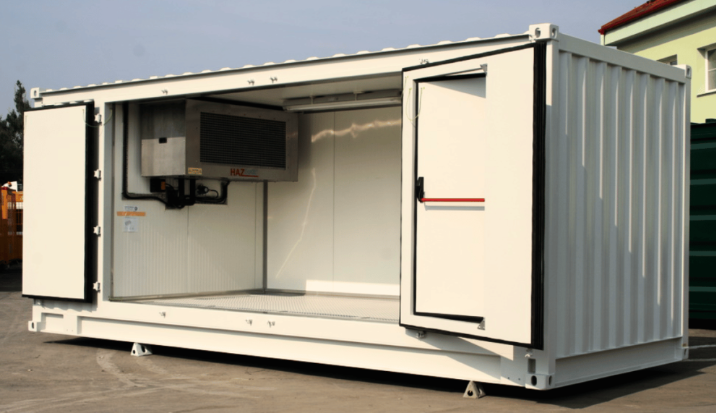Expert Tips to Master Refrigerated Shipping in 2025 with Confidence
In 2025, the realm of refrigerated shipping is undergoing significant transformation, driven by technological advancements, heightened consumer expectations, and stringent regulatory requirements. For businesses dealing with perishable goods – be it food, pharmaceuticals, or other temperature-sensitive products – understanding and adapting to these changes is crucial for maintaining product integrity and profitability.
1. Embracing Advanced Temperature Monitoring
Modern refrigerated shipping relies heavily on real-time temperature monitoring. Utilizing IoT-enabled sensors and data loggers allows for continuous tracking of temperature and humidity levels throughout the supply chain. This not only ensures compliance with safety standards but also provides actionable insights to preempt potential issues.
2. Leveraging Sustainable Refrigeration Technologies
With increasing emphasis on sustainability, the industry is shifting towards eco-friendly refrigeration solutions. Innovations such as solar-powered reefer containers and the use of natural refrigerants are becoming more prevalent, reducing the carbon footprint of cold chain logistics.
3. Optimizing Packaging for Efficiency and Safety
Effective packaging is paramount in refrigerated shipping. Employing materials like insulated foam containers, gel packs, and phase change materials helps maintain desired temperatures. Moreover, proper labeling and adherence to handling guidelines minimize the risk of temperature excursions.
4. Navigating Regulatory Compliance
Compliance with international and local regulations is non-negotiable. Staying abreast of guidelines from authorities such as the FDA or Transport Canada ensures that your refrigerated shipments meet all necessary standards, avoiding costly penalties and ensuring product safety.
5. Integrating Advanced Logistics Solutions
The integration of AI and machine learning in logistics is revolutionizing route planning and demand forecasting. These technologies enable more efficient deliveries, reducing transit times and preserving product quality.

What Is Refrigerated Shipping?
Refrigerated shipping, often referred to as cold chain logistics or reefer shipping, is the transportation of temperature-sensitive goods using specialized containers or vehicles that maintain controlled temperature environments throughout transit. These goods include perishable foods like produce, dairy, seafood, and meats, as well as pharmaceuticals, certain chemicals, and high-end cosmetics that degrade or lose efficacy outside specific temperature ranges.
Refrigerated shipping plays a vital role in preserving the quality, safety, and shelf life of these products. Unlike regular freight, reefer shipments require meticulous temperature regulation, humidity control, and often involve specific handling procedures to comply with stringent safety and regulatory standards. Whether via truck, rail, air, or ocean freight, refrigerated shipping ensures that delicate cargo remains within the prescribed conditions from origin to destination.
In 2025, the importance of refrigerated shipping continues to grow, driven by global supply chains, rising eCommerce demand for fresh deliveries, and increased regulatory scrutiny. As consumer expectations for product freshness and safety escalate – particularly in food and healthcare sectors – businesses that depend on time- and temperature-sensitive products must rely on the precision and reliability of cold chain logistics to avoid spoilage, legal liability, or brand damage.
A typical refrigerated shipment involves several components:
Refrigerated containers or trucks (reefers): Equipped with active cooling systems to maintain consistent temperature.
Insulated packaging: Used inside containers to minimize thermal variation and ensure stability during transfer or delays.
Temperature monitoring devices: Many reefer systems are now IoT-enabled, providing real-time data on temperature, location, and even humidity.
Contingency and backup protocols: In case of delays or malfunctions, businesses implement redundant systems to maintain cargo quality.
Furthermore, companies must tailor their refrigerated shipping practices to the product type. For example, frozen meat may require sub-zero transit conditions, while fresh flowers thrive around 1°C–2°C. Pharmaceuticals, especially vaccines or biologicals, demand tight temperature tolerances with precise documentation and validation throughout transit.
In essence, refrigerated shipping is not just about cold containers; it’s about integrated systems, smart logistics, compliance, and technological precision. The margin for error is slim, and the stakes are high – making this one of the most critical and rapidly advancing fields in modern freight transport.
How Did Refrigerated Shipping Start?
The origins of refrigerated shipping can be traced back to the 19th century, when industrialization and expanding global trade highlighted the need for long-distance transportation of perishable goods. Before refrigeration, perishables like meat, dairy, and fruit had extremely limited geographic markets, as spoilage occurred within days due to temperature exposure.
Early attempts at cold transport were rudimentary. In the 1840s, American entrepreneurs began experimenting with insulated railcars filled with blocks of ice harvested from lakes. These ice-cooled cars were used to ship butter and cheese over short distances. By the 1870s, Gustavus Swift, a pioneer in the meat-packing industry, developed one of the first practical refrigerated railcars to ship beef from Chicago to the East Coast. His innovation revolutionized the meat industry by enabling the distribution of fresh cuts across the country without spoilage.
As trade demands grew, the technology behind refrigerated shipping evolved. The late 19th and early 20th centuries saw the introduction of mechanical refrigeration systems. By using ammonia and later Freon-based cooling systems, goods could be maintained at much colder and more consistent temperatures. This enabled ocean liners to transport chilled beef from South America and Australia to Europe – launching the first international cold chains.
During World War II, refrigerated shipping advanced rapidly due to the military’s need to transport fresh food, blood, and medicine to troops across continents. The post-war era saw these technologies transition into the civilian market, supporting the globalization of food and pharmaceutical industries.
The 1950s and 60s marked a significant turning point with the advent of intermodal refrigerated containers (reefer containers), which could be moved between ships, trains, and trucks without unloading cargo. This innovation led to seamless international transport and massive growth in global trade. Cold chain logistics became a specialized industry, with protocols and standards emerging around cargo temperature, humidity control, and traceability.
In the 21st century, refrigerated shipping is powered by digital transformation. IoT sensors, AI route optimization, and blockchain-based traceability now enable unparalleled precision and transparency. Emerging eco-conscious trends are pushing the industry toward sustainable refrigeration technologies, including solar-powered reefers and non-ozone-depleting refrigerants.
Canada and North America have played pivotal roles in this evolution. With vast geographies and seasonal extremes, Canadian logistics firms had to innovate robust reefer systems to ensure safe delivery of food and healthcare products across long distances. This drive for performance and safety has helped position Canada as a leader in cold chain excellence.
Today’s refrigerated shipping industry is the result of nearly two centuries of engineering ingenuity, scientific discovery, and relentless pursuit of efficiency. From blocks of ice on wooden railcars to cloud-connected reefer fleets spanning the globe, this industry now underpins food security, global health, and economic resilience.
Why Did Refrigerated Shipping Start?
We’ve been keeping things cool on the go for a long time! Back in the 1800s, people used ice and salt like giant freezers in trucks, but it wasn’t very reliable and often spoiled the food.
Luckily, in the 1900s, we invented special refrigerated shipping containers that were much better at keeping things cold. Today, thanks to even more amazing technology, we have fancy equipment that keeps track of the temperature and makes sure the food stays fresh the whole trip. Just as it was right before being shipped!
Advantages of Refrigerated Shipping
Consumers increasingly expect products to travel far and wide, and refrigerated shipping helps perishable goods reach more markets.
This means local businesses, like specialty food producers and restaurants, can now reach customers across the country and even the globe.
So with that in mind, let’s look at the benefits of it –
- Keeps Things Safe and Sound:
Imagine delicate flowers traveling alongside medicines, all in the same truck! That’s possible because refrigerated trucks have special compartments that can be set to different temperatures. This ensures everything arrives perfectly chilled and protected, following all the rules and regulations.
- Makes the Supply Chain Smooth Sailing:
No one wants to waste delicious food or important medicine. Refrigerated trucks help prevent that by keeping things at the perfect temperature all the way to their destination. This means less waste, more happy customers, and a happier planet!
- Adjustable Temperatures
Refrigerated trucks aren’t just for keeping things cold. They can be adjusted for warmer outside temperatures too, making them perfect for shipping sensitive goods in any weather.
- Fits All Kinds of Cool Stuff:
From your favorite berries to life-saving vaccines, refrigerated trucks can handle a wide variety of temperature-sensitive goods. It’s like having a super flexible cooler that can travel long distances, keeping all kinds of things fresh and ready to use.
- Suitability
Refrigerated containers come in various sizes to fit your needs and budget, just like how clothes come in different sizes! Here are the most common ones:
- 21 feet high cube wide, 22 feet high cube wide: These options offer extra height and width compared to the standard 20 feet container, providing more space for taller items or larger quantities.
- 40 feet, 40 feet high cube wide, 45 feet high cube wide: These are the biggest options, perfect for storing and transporting large volumes of food or other temperature-sensitive goods. The “high cube wide” versions offer even more space compared to the standard 40 feet container.
How Do You Ship Refrigerated Products?
Before you go ahead, you need to take some steps before sending the shipment. They are –
Plan Ahead:
- Coordinate with your shipping company and ensure you know when the package will arrive.
- Keep products refrigerated before shipping to prevent temperature fluctuations.
- Research the expected temperatures during transit and check weather forecasts for potential anomalies.
- Inform the recipient of the delivery time and ensure they can be available to receive and store the products properly.
Choose the Right Packaging:
- Use the right insulated packaging supplies, like box liners, gel packs, and foam/fiber insulators, based on your products, weather, and desired temperature.
- Line your container with thermal protection materials like foil, foam, or bubble wrap.
- Use “sweat-proof” cold packs if your products must arrive dry.
- Secure your products with dunnage materials to prevent movement during transport.
Seal and Ship:
- Seal your insulated box or pallet securely.
- Consider using low-cost insulated pallet covers for bulk shipments.

Refrigerated Shipping With LTL and FTL
Most refrigerated shipments are sent as Less Than Truckloads (LTL). This means several smaller shipments are grouped together in one truck, like carpooling for cargo. This way, everyone shares the cost and resources, making it more efficient and affordable, especially for smaller shipments.
However, if you have a very large shipment, Full Truckload (FTL) options can handle everything at once too. But don’t know where to look for them?
Enter RailGateway: your trusted partner for reliable refrigerated transportation. Get in touch with our experts for all your shipping needs.
Refrigerated Transportation Best Practices
Here’s what companies do to keep temperature-sensitive cargo fresh during shipping:
- Driver Training: Drivers learn how to operate refrigeration units properly, choosing between continuous cooling (more fuel) or cycling (less fuel but a wider temperature range).
- Even Cooling: “Trailer chutes” spread cool air throughout the trailer, preventing some areas from getting too warm.
- Temperature Monitoring: Trailers often have sensors that track internal temperature and send alerts if things get too hot or cold, preventing spoilage.
- Regular Maintenance: Refrigeration units and trailers need regular maintenance to ensure they function properly and prevent breakdowns.
- Backup Plan: Having a plan in place is crucial in case of equipment failure. This includes knowing where to get repairs and having a service provider on call to minimize spoilage.
By following these steps, companies can ensure their temperature-sensitive cargo arrives fresh and in good condition.
Types of International Refrigerated Shipping
Need to ship something temperature-sensitive beyond Canada? You’ll likely need refrigerated shipping by air or water:
By Air –
- Pros: Faster than boats.
- Cons: More expensive due to dry ice (hazardous) and gel packs (added weight).
By Ship:
- Pros: cheaper than air. Refrigeration works similarly to trucks.
- Cons: slowest option. Requires careful packaging due to long travel times. Some perishables, like non-frozen foods, might not be suitable.
Considerations:
- International shipping involves more restrictions and higher costs.
- Not all products can handle long journeys. Some may be sent unripe to compensate.
- Delicate items face a higher risk of damage compared to sturdier options.
This explains why certain foods are expensive or hard to find outside their growing regions.
Conclusion
As we look ahead, the trajectory of refrigerated shipping is clear: businesses must adopt a proactive, technology-driven approach to meet the evolving demands of the market.
1. Prioritizing End-to-End Visibility
Implementing comprehensive tracking systems provides stakeholders with real-time data, enhancing transparency and enabling swift responses to any disruptions in the cold chain.
2. Investing in Workforce Training
Equipping personnel with the knowledge and skills to handle temperature-sensitive goods is essential. Regular training ensures adherence to best practices and fosters a culture of quality and safety.
3. Collaborating with Specialized Partners
Partnering with logistics providers experienced in refrigerated shipping can offer access to specialized equipment and expertise, ensuring that your products are transported under optimal conditions.
4. Embracing Innovation
Staying informed about emerging technologies and industry trends allows businesses to remain competitive. Whether it’s adopting new refrigeration methods or utilizing advanced analytics, innovation is key to success in refrigerated shipping.

FAQ
1. What is refrigerated shipping?
Refrigerated shipping involves transporting perishable goods in temperature-controlled environments to maintain product quality and safety during transit.
2. Which products require refrigerated shipping?
Items such as fresh produce, dairy products, meats, seafood, pharmaceuticals, and certain chemicals often require refrigerated shipping to prevent spoilage or degradation.
3. How do I choose the right packaging for refrigerated shipments?
Select packaging that provides adequate insulation and incorporates refrigerants like gel packs or dry ice, depending on the required temperature range.
4. What are the common temperature ranges in refrigerated shipping?
Typical ranges include chilled (2°C to 8°C), frozen (-18°C or lower), and controlled room temperature (15°C to 25°C), depending on the product’s requirements.
5. How can I ensure compliance with regulations?
Stay updated with guidelines from relevant authorities, implement proper documentation, and utilize validated temperature monitoring devices.
6. What role does technology play in refrigerated shipping?
Technology enables real-time monitoring, predictive analytics, and efficient route planning, enhancing the reliability and efficiency of refrigerated shipments.
7. How do I handle delays in refrigerated shipping?
Have contingency plans in place, such as backup refrigeration options and alternative routes, to mitigate the impact of unforeseen delays.
8. Are there sustainable options in refrigerated shipping?
Yes, options include using eco-friendly refrigerants, energy-efficient equipment, and optimizing logistics to reduce carbon emissions.
9. What is the importance of pre-cooling in refrigerated shipping?
Pre-cooling ensures that the cargo and container are at the desired temperature before transit, reducing the risk of temperature fluctuations.
10. Can I ship refrigerated goods internationally?
Yes, but it’s crucial to understand and comply with the import/export regulations and temperature requirements of the destination country.
11. How do I monitor temperature during transit?
Utilize data loggers and IoT devices that provide real-time temperature data and alerts for any deviations from the set range.
12. What steps should I take if a temperature excursion occurs?
Immediately assess the extent of the deviation, consult with quality assurance teams, and determine the impact on product integrity before proceeding.
Additional Resources
FedEx: How to Ship Perishables https://www.fedex.com/en-us/shipping/how-to-ship-perishables.html
Maersk: Upcoming Cold Chain Trends 2025 https://www.maersk.com/insights/growth/2024/12/13/what-to-expect-in-2025-upcoming-cold-chain-trends
GCCA: Cold Chain Transportation Best Practices https://www.gcca.org/resource/coldchaintransportationbestpractices/
Geotab: Cold Chain Logistics Tips https://www.geotab.com/blog/cold-chain-logistics/
Food Logistics: Key Cold Storage Trends for 2025 https://www.foodlogistics.com/warehousing/cold-storage/article/22929284/jones-lang-lasalle-jll-key-cold-storage-trends-for-2025-and-beyond
Tradecorp: Reefer Containers in Cold Chain https://www.tradecorp-usa.com/blog/reefer-containers-in-cold-chain/
Myriad: Best Practices in Refrigerated Transportation https://myriadparts.com/news/best-practices-in-refrigerated-transportation-ensuring-efficiency-and-compliance-in-2025
ZhenHub: Cold Chain Logistics Best Practices https://zhenhub.com/blog/cold-chain-logistic/
Upper Inc.: Cold Chain Logistics Guide https://www.upperinc.com/guides/cold-chain-logistics/
RailGateway: Refrigerated Shipping Tips https://railgateway.ca/blog/refrigerated-shipping
Al-Amin Bros: Cold Chain Excellence in 2025 https://www.al-aminbros.com/news/cold-chain-excellence-why-refrigerated-logistics-matter-more-than-ever-in-2025
IPC Pack: Shipping Refrigerated Products https://ipcpack.com/resources/shipping-refrigerated-products/
How We Can Help
For businesses looking to optimize their freight shipping with reliable, efficient, and cost-effective solutions, RailGateway.ca is your trusted partner in intermodal logistics. Whether you’re new to freight trains or want to enhance your existing supply chain, our team of intermodal experts is ready to guide you every step of the way.
Contact RailGateway.ca today for a free quote or to speak directly with one of our experienced intermodal specialists. Let us help you unlock smarter, smoother shipping solutions tailored to your unique needs.
Visit RailGateway.ca or call us to get started on transforming your freight shipping strategy in 2025 and beyond.





